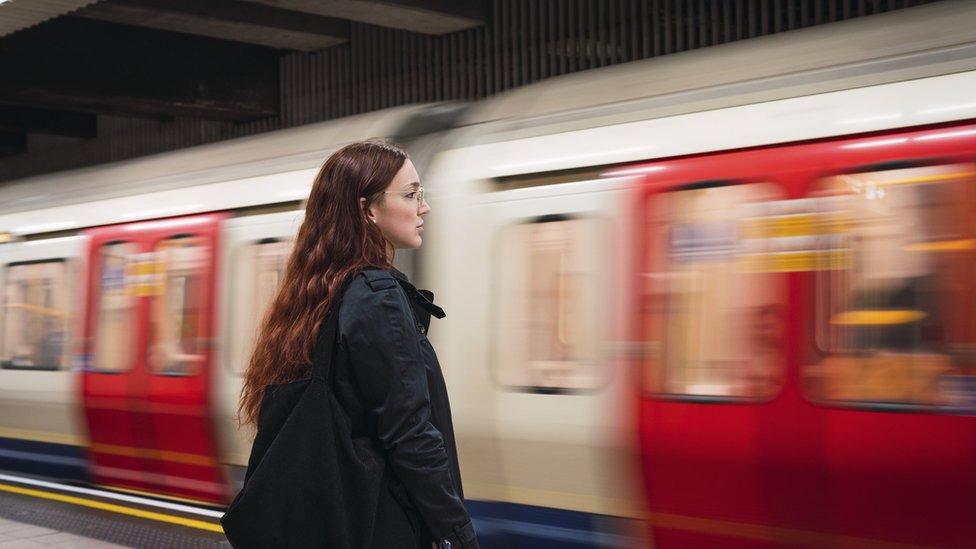Report finds Northern line has highest dust levels
- Published

Trains moving over rails, engineering works and skin and hair contribute to dust
The Northern line has the highest concentrations of dust levels of any Tube line.
The finding was revealed in a report commissioned by Transport for London (TfL) to analyse air quality on the London Underground.
The line had the highest levels of respirable dust on average, which means it can penetrate down to the deep lung.
TfL said dust levels on the Tube have been going down.
Trains moving over rails, engineering works and skin and hair contribute to dust.
The Northern line was closely followed by the Piccadilly line and Bakerloo line.
The Jubilee line has the lowest levels of respirable dust, the report found.
TfL said it has reduced dust levels by 19% on average across 24 stations it has monitored since 2021.
It has also seen a 2% reduction in dust levels in the driver's cab since 2021, equating to a 27% drop since 2019, it highlighted.
Lilli Matson, TfL's chief safety, health & environment officer said: "This positive result demonstrates our approach to understanding and tackling the issue of dust and air quality on the Tube network is making a difference, both for our colleagues and our customers."
She added dust levels continue to remain well below occupational health limits set by the Health and Safety Executive (HSE).
Finn Brennan for Aslef, the train drivers' union, said: "It's good to see some overdue improvements in air quality.
"Our health and safety reps are continuing to push TfL management for more progress to make the Underground as safe as possible for staff and passengers."
In 2018 the government's Committee on the Medical Effects of Air Pollutants (COMEAP) found there was not enough evidence at that time to determine the health impact of underground particulate matter and that more research is needed.
- Published15 December 2022

- Published3 March 2020